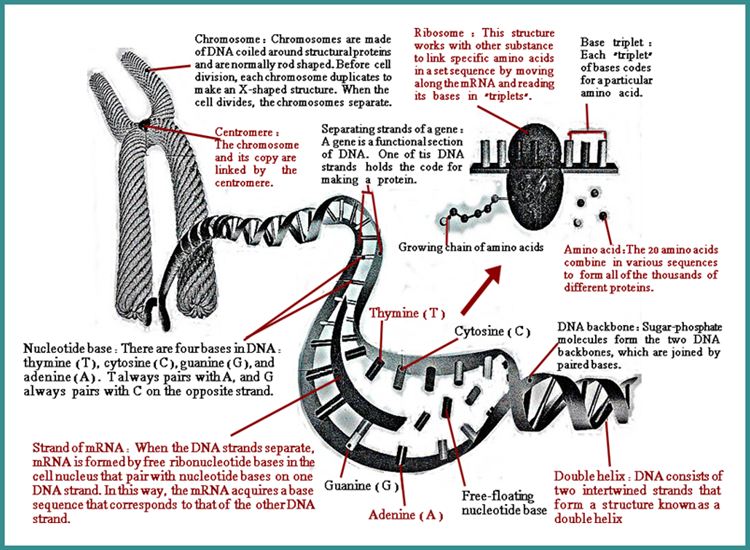Genetics
Genetic Engineering
============================================
Genetic engineering is the modification of an organism's genetic material
for practical use. Genes are units of information that instruct living cells to
make specific proteins, chemicals that affect all life processes. By modifying
an organism's genes, scientists can produce various effects, such as inhibiting
its protein production or causing it to manufacture a modified or entirely new
protein. Genetically engineered products have many uses in industry and in
medicine.
Genetic engineering can be sued to make enzymes for biological washing powders,
to manufacture insulin for people with diabetes, and to generate antibodies that can
fight cancer. Genetically engineered products can often work better and more safely
than natural ones, for example, genetically engineered blood-clotting factor carries no
risk of blood-borne infections. They can also be produced in large quantities; insulin
is now produced in bacteria or in yeast, which multiply rapidly, allowing the production
of the protein in abundance.
Subtilisin Fermenters
=====================
Subtilisin is a protein-breaking enzyme produced naturally by certain bacteria.
Genetically modified (GM) subtilisin that can work in hot, alkaline conditions is
used in detergents to break down protein-based stains, such as blood. GM
subtilisin is produced by the GM bacteria grown in fermenters.
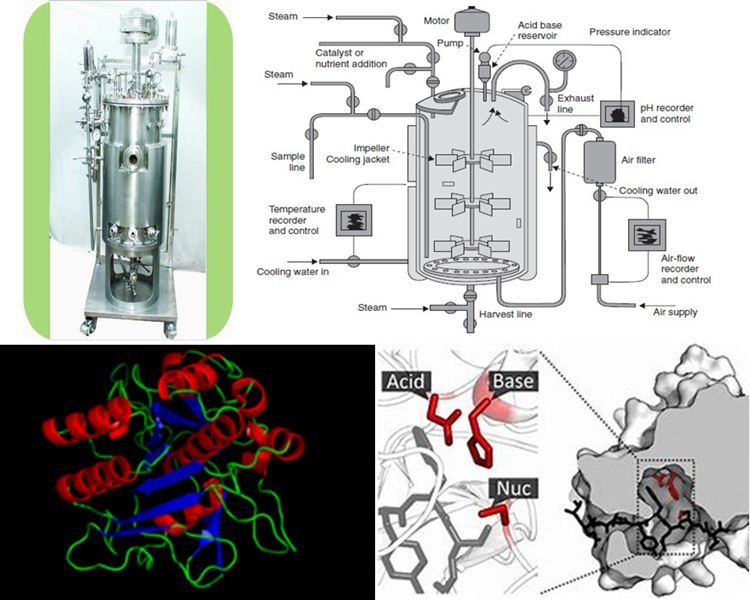
Extracting a Gene
==========================
Genetic engineering involves two processes. First, the gene is extracted and isolated and,
if necessary, modified. Then, it is inserted into an animal or plant cell (creating a "transgenic"
species) or a microbial cell. The protein encoded by the inserted gene is produced by the
animal or plant cell, or (if the gene was inserted into a microbe) by culturing microbial cells
in a fermenter.
Each gene is simply a set of chemical instructions, encoded as a sequence of four chemical
bases (abbreviated as A, C, G, and T) that make up a long double-stranded molecule called
DNA. A complete molecule of DNA called a chromosome, contains many distinct genes.
The first step in genetic engineering is to identify the gene of interest in the midst of a
chromosome. Scientist often do this by isolating the gene's messenger RNA (mRNA),
a molecule that carries instructions for protein manufacture from the gene in the cell nucleus
to protein-making units in the cytoplasm. mRNA is a complementary copy of one strand of the
section of DNA comprising a gene and can be use as a template for reconstructing the gene.
If desired, the gene can be modified to produce an improved protein.
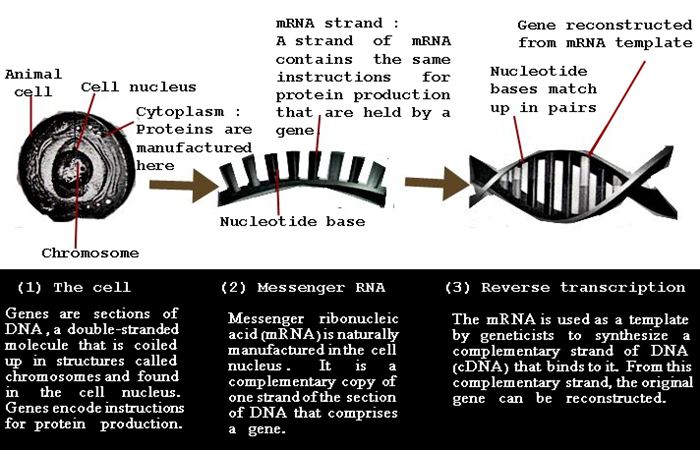
Genetic Engineering in Animal Cells
==================================
One method of incorporating a foreign or modified gene into an animal is
to inject copies of the gene into a newly fertilized egg. The gene then becomes
integrated into the chromosomes in the nucleus of the egg, which is then
implanted into a foster mother. As the cell starts dividing, the gene is copied
along with every other gene in the chromosomes. In this way, the gene is present
in every body cell of the "transgenic" animal.
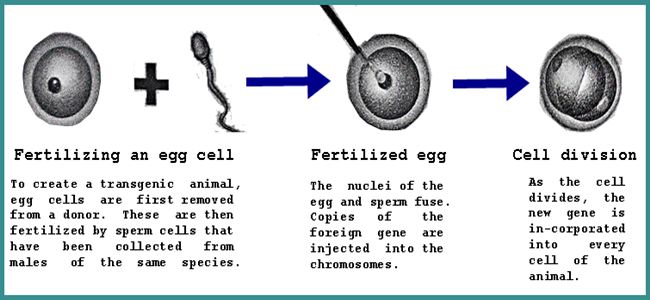
Genetic Engineering in Micro-organisms and Plant Cells
==================================================
Some bacteria contain extra chromosomal loops of DNA called plasmids,
which replicate independently of the chromosome, both within the cell and
also when a bacterium divides. By inserting foreign genes into plasmids using
special "restriction" enzymes that cut the DNA at specific points, bacteria can
be used as protein factories on an industrial scale. Plasmid DNA can also be
inserted into plant cells in order to produce genetically modified crops.
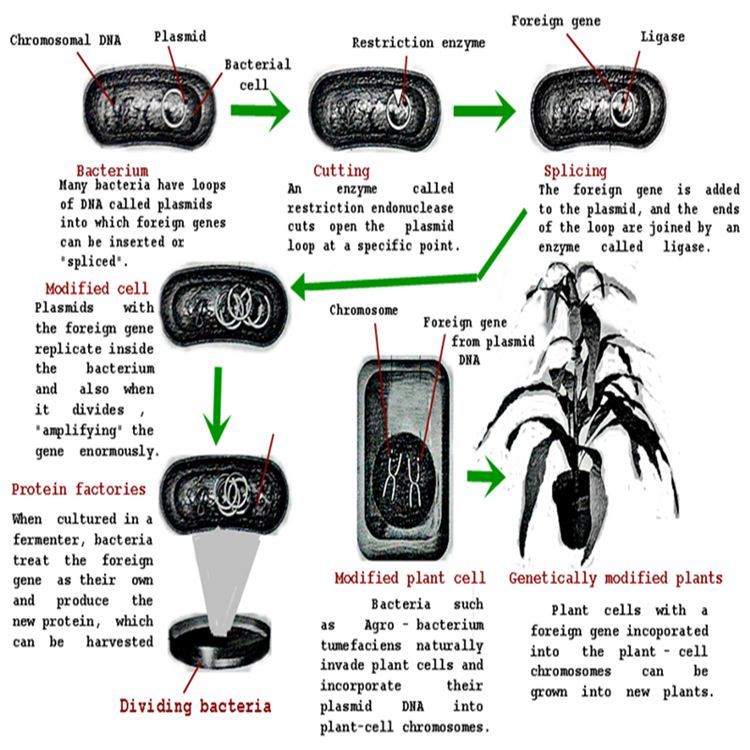
Human Genome Project
========================
Most human body cells contain about 90,000 pairs of genes (units of hereditary data)
arranged on two sets of 23 chromosomes (structures of the molecule DNA). This
genetic information forms the genome. The Human Genome Project is an international
program launched in 1990 to map the sequence of nucleotide bases (the building
blocks of DNA) in the genome and determine the function of every gene.
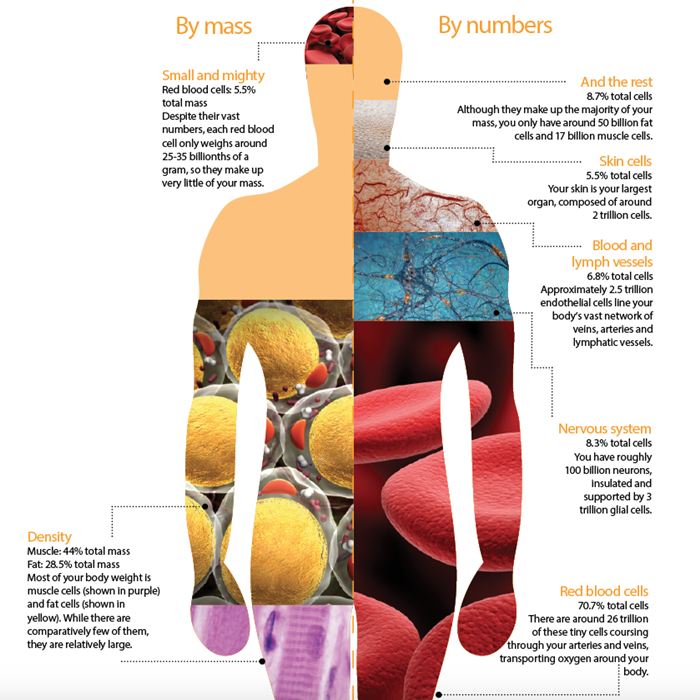
The mapping of the human genome is a scientific achievement comparable with
putting people on the Moon. The genomes of some organisms, including a worm
and a fruit fly, have already been sequenced (mapped), but these genomes are
small compared to the human genome, which contains about 3 billion nucleotide
bases. By sequencing the human genome, scientists will better understand the
genes involved in body processes and diseases. The genes in each of an
individual's cells are identical, but the genome various slightly between individuals
(which, in part, makes them individuals), so the Human Genome Project maps
genes from a representative group of people. Although we now have the DNA
sequence of the human genome, it will take many years to identify the individual
genes and determine their function.
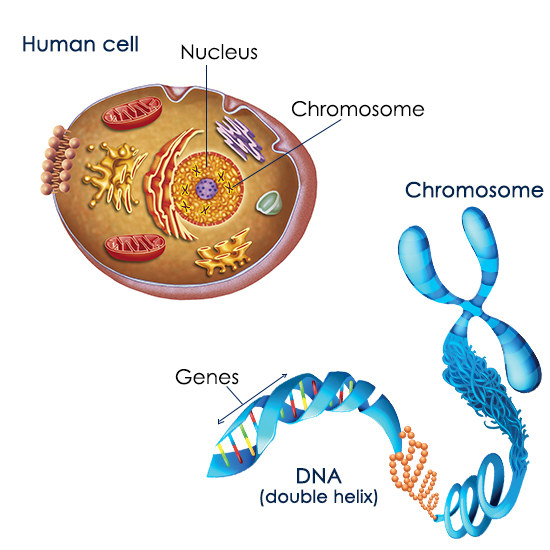
The Function of Genes
=========================
A gene is a section of double-stranded DNA containing data that enables an
organism to function. Most genes contain instructions for making a protein.
These instructions are encoded within the sequence of nucleotide bases on
one of the gene's strands. An elaborate chemical machinery exists in body
cells to make proteins when they are needed, using the instructions encoded
by the genes. Proteins play many roles in the body, so genes ultimately affect
every aspect of an individual's development and function. For the same reason,
genetic defects can be cause of ill health and disease.
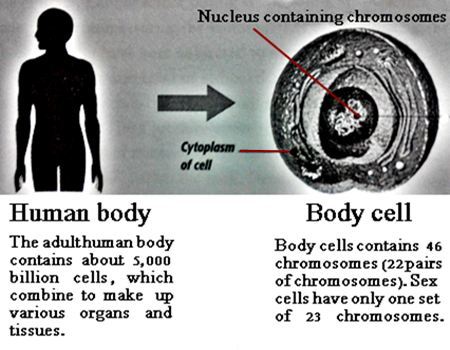
DNA Sequencing
====================
DNA is sequenced to work out the order of its four nucleotide bases ( T, A, C and G ) ,
which spell out the genetic information. By examining the sequence of a specific length
of DNA, scientists can see whether it contains a gene. Only about 10 percent of the
human genome contains genes (the remaining 90% is known as junk DNA). There are
several methods for sequencing . The one shown here is the Sanger Method, devised
by Frederick Sanger, a biochemist who used it to sequence the genome of a virus
during the 1970s. The Human Genome Project used new techniques , computers, and
robotic machinery that greatly increased the speed of DNA sequencing.
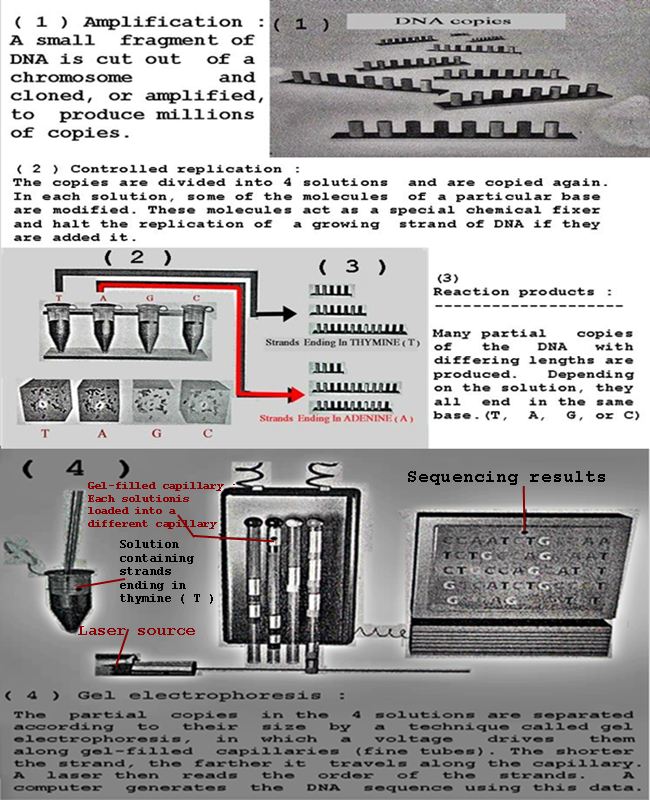
How a Protein is Made
=======================
First, a section of DNA containing a gene seperates into two strands. A molecule called
messenger RNA (mRNA), consisting of a sequence of nucleotide bases that duplicate
the gene's protein-making instructions, forms on one strand. The mRNA then moves to
the cytoplasm, where the structures called ribosomes process the instructions.
